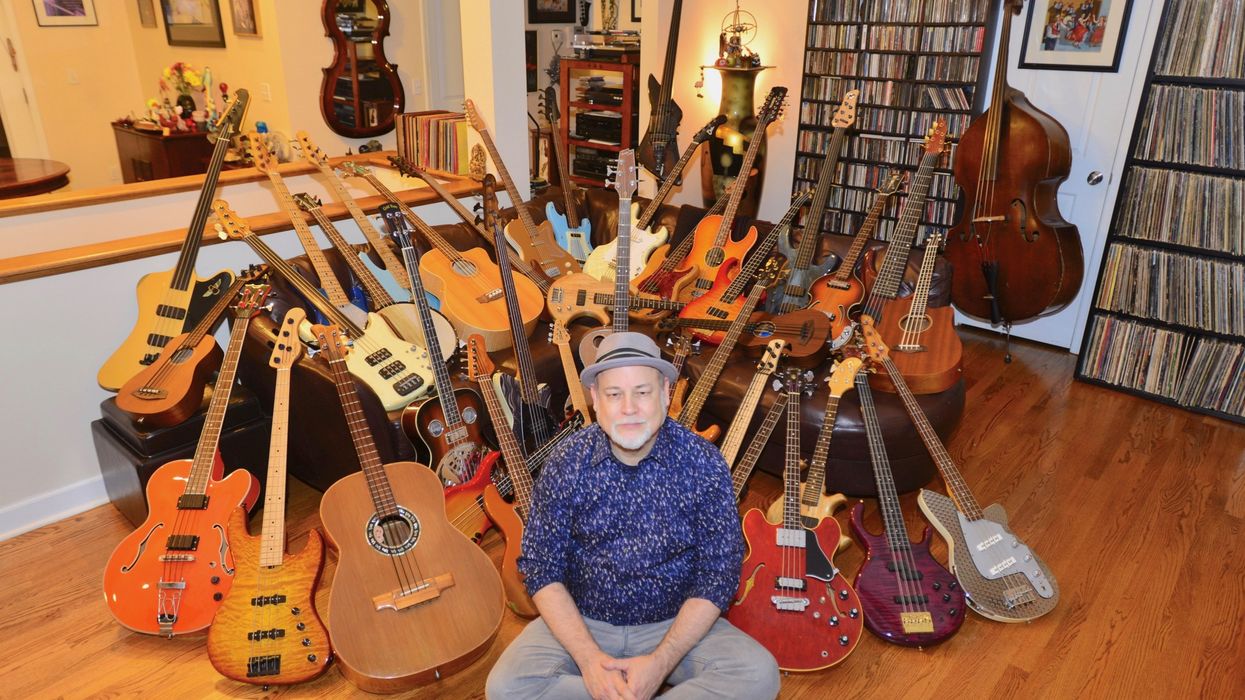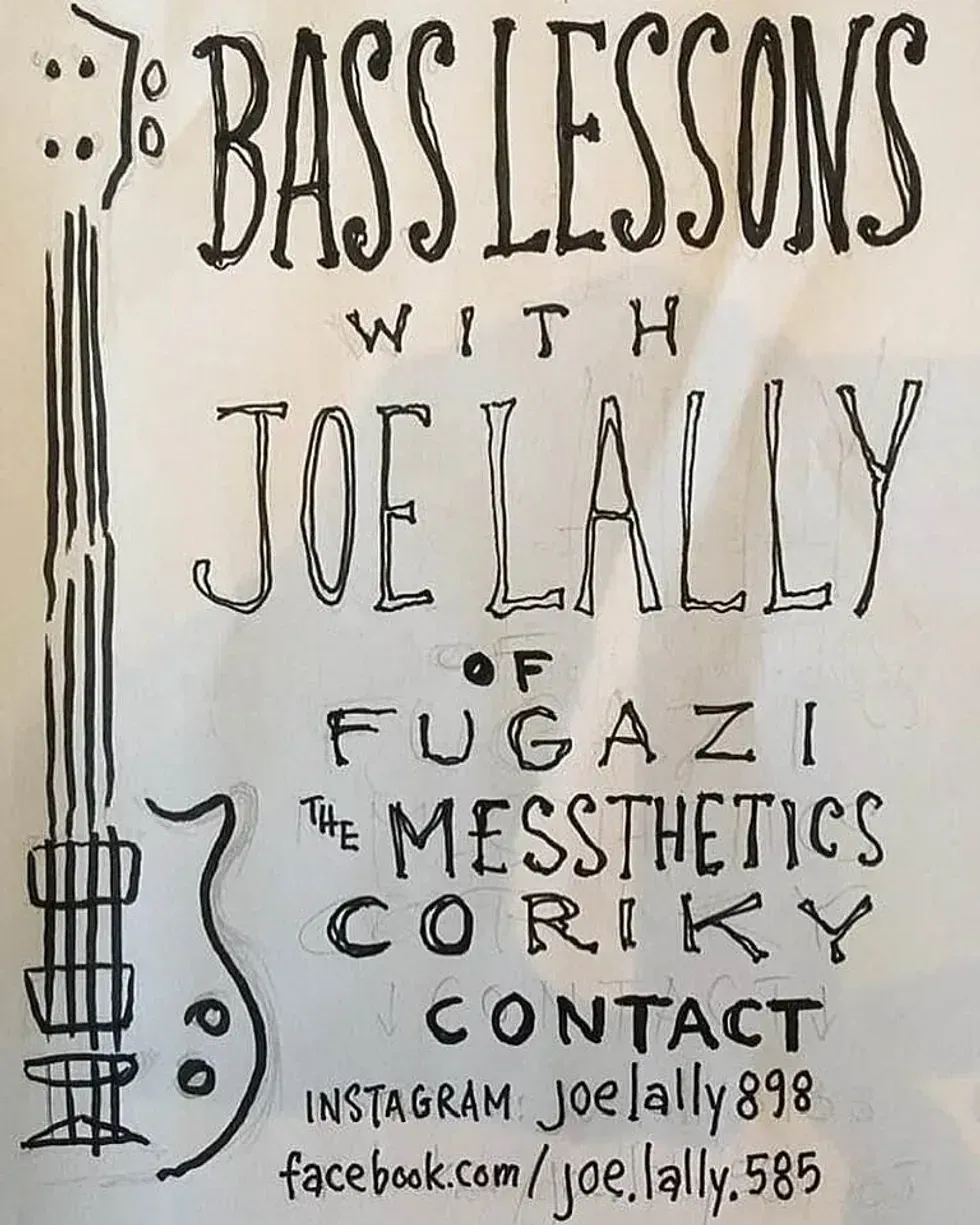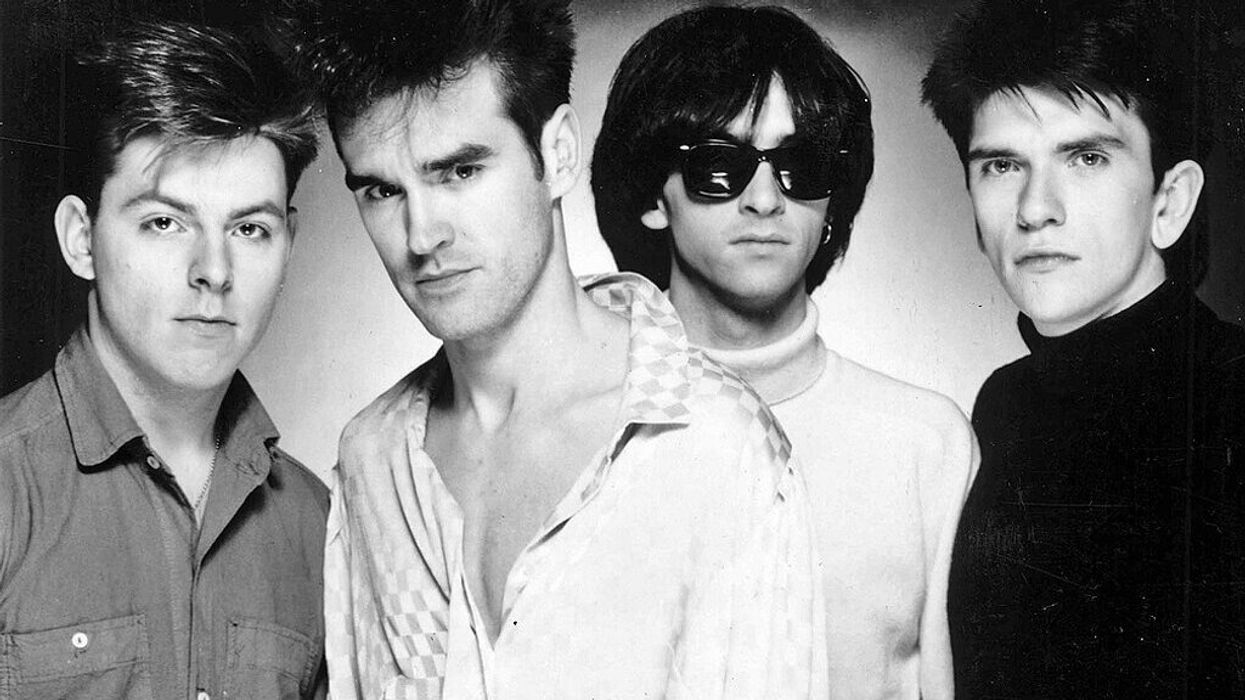I used to think that stereotypes and preconceived notions about what is right and wrong when it comes to bass were things that other people dealt with—not me. I was past all that. Unfazed by opinion, immune to classification. Or so I thought, tucked away in my jazz-hermit-like existence.
That belief was shattered the day Ian Martin Allison handed me a Fender Coronado while I was blindfolded in his basement. (Don’t ask—it’s a long story and an even longer YouTube video if you have time to kill.) For years, I had been a single-cut, 5-string, high-C-string player. That was my world. So, you can imagine my shock when I connected almost instantly with something that felt like it was orbiting a different solar system.
Less than 5 minutes with the instrument, and it was all over. The bass stayed in Ian’s basement. (I did not.) I returned home to Los Angeles, but I couldn’t stop thinking about it. I kept playing my beloved semi-chambered single-cut 5-string, but I sent its builder, Anders Mattisson, a message about my recent discovery. I asked if there was any way we could create something with the essence of a Coronado while still suiting my playing and my music.
That’s when everything I thought I knew about bass—and the personal boundaries I had set for myself—came crashing down.
When we started talking about building a bass with a fully chambered body, much like the Coronado, I was adamant about two things: It needed to have active electronics, and I would never play a headless bass.
Fast-forward three months to the winter NAMM show in California. Anders arrived for dinner at my house, along with a group of incredible bass players, including Henrik Linder. I was literally in a chef’s apron, trying to get course after course of food on the table, when Henrik said, “Hey, let’s bring the new bass in.”
He came down the stairs carrying something that looked suspiciously like a guitar case—not a bass case. I figured there had been some kind of mistake or maybe even a prank. When I finally got a break from the chaos in the kitchen, I sat down with the new bass for the first time. And, of course, it was both headless and passive.
I should mention that even though I had made my requests clear—no headless bass, active electronics—I had also told Anders that I trusted him completely. And I’m so glad I did. He disintegrated my assumptions about what a bass “has to” or “should” be, and in doing so, changed my life as a musician in an instant. The weight reduction from the fully chambered body made it essential for the instrument to be headless to maintain perfect balance. And the passive nature of the pickups gave me the most honest representation of my sound that I’ve ever heard in over 30 years of playing bass.
I’m 46 years old. It took me this long to let go of certain fundamental beliefs about my instrument and allow them to evolve naturally, without interference. Updating my understanding of what works for me as a bass player required perspective, whereas some of my most deeply held beliefs about the instrument were based on perception. I don’t want to disregard my experiences or instincts, but I do want to make sure I’m always open to the bigger picture—to other people’s insights and expertise.
Trusting my bass builder’s vision opened musical doors that would have otherwise stayed bolted shut for years to come. The more I improve my awareness of where the line between perception and perspective falls, the more I can apply it to all aspects of my world of bass.
Maybe this month, it’s playing an instrument I never would have previously considered. Next month, it might be incorporating MIDI into my pedalboard, or transcribing bass lines from spaghetti Westerns.
No matter what challenges or evolutions I take on in my music and bass playing, I want to remain open—open to change, open to new ideas, and open to being proven wrong. Because sometimes, the instrument you never thought you’d play ends up being the one that changes everything.
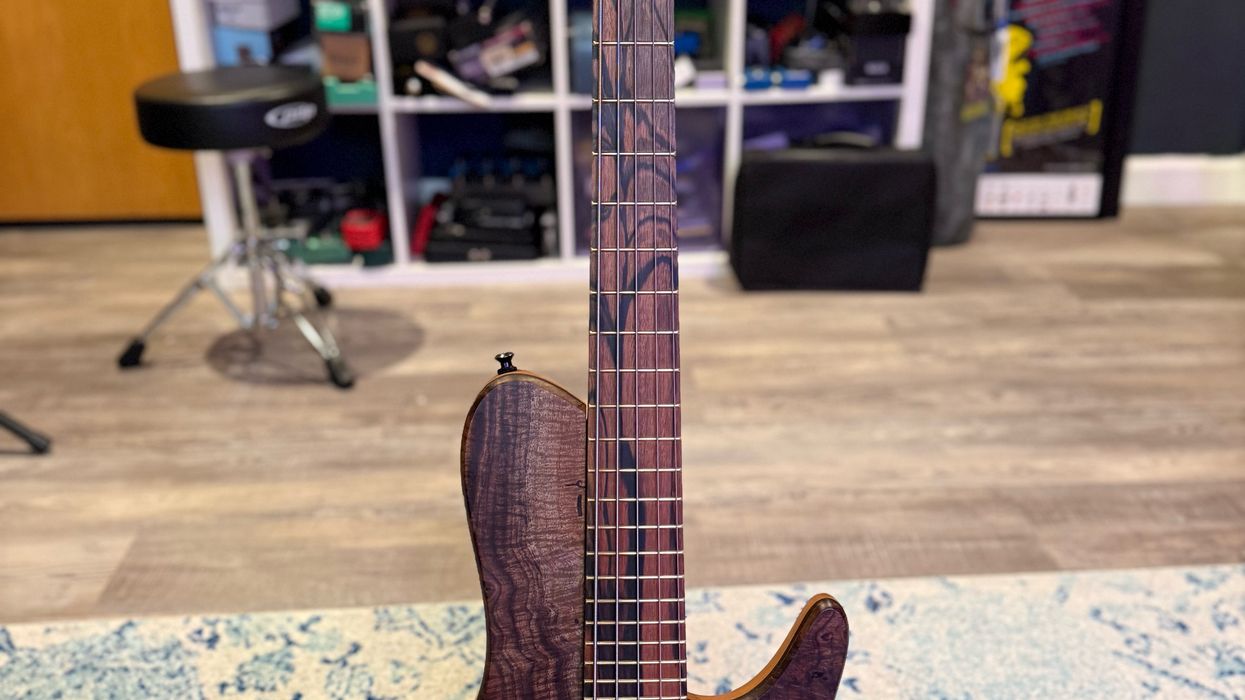

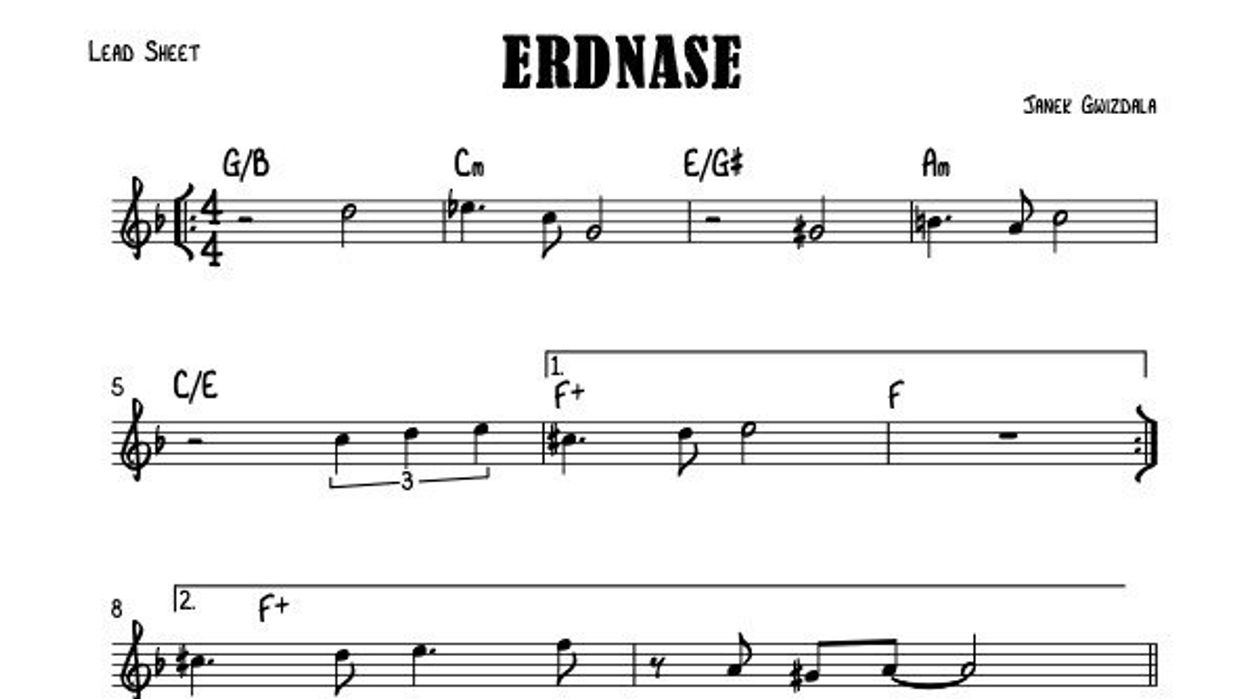
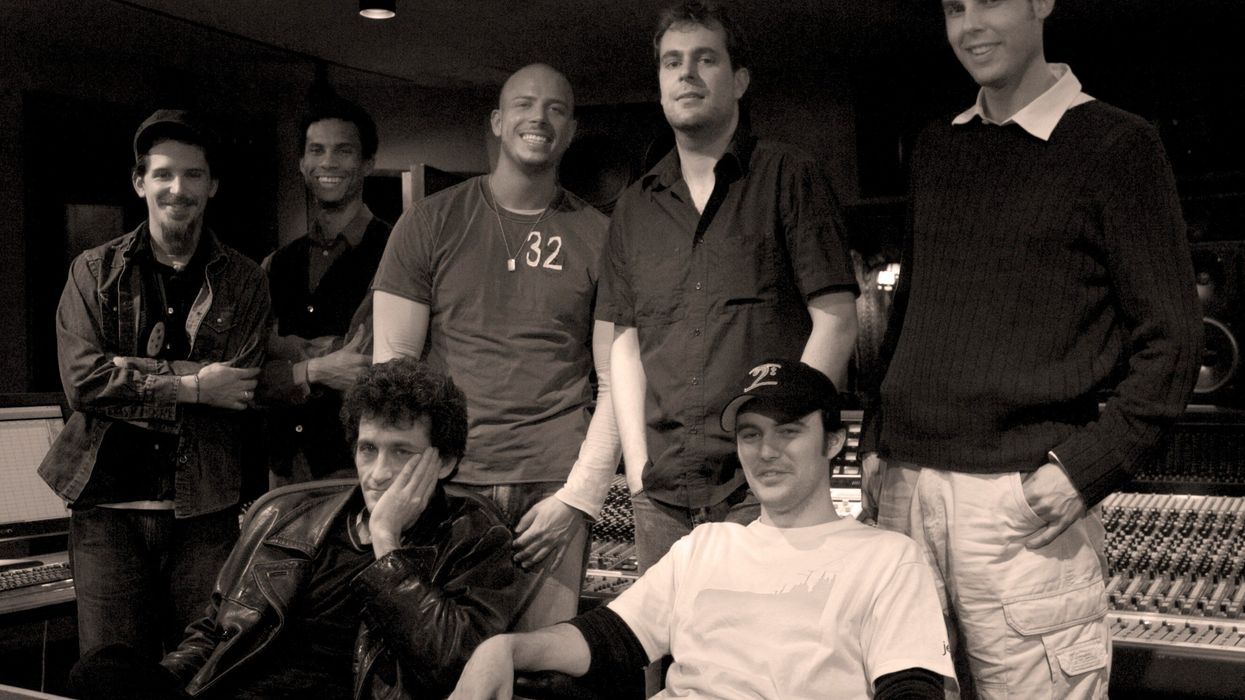


![Devon Eisenbarger [Katy Perry] Rig Rundown](https://www.premierguitar.com/media-library/youtube.jpg?id=61774583&width=1245&height=700&quality=70&coordinates=0%2C0%2C0%2C0)





